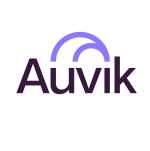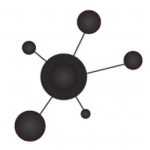What is our primary use case?
We use Datadog to monitor our Kubernetes clusters.
We have 3 different clusters for different parts of the SDLC. We run the Datadog agent DaemonSet as well as the Datadog cluster agent. Our services have the APM installed by default.
To create monitors, we use Terraform. This is provided out-of-the-box for our service owner.
We run EKS on top of K8s, therefore, we also make use of some of the AWS monitoring capabilities that can be integrated into Datadog.
We are hugely reliant on Datadog for all aspects of our system.
How has it helped my organization?
With Datadog, we were able to gain observability in our system.
The installation step is pretty straightforward.
It's easy to use by non-DevOps users. For instance, our engineers do not interact with K8s often; therefore, it is hard for them to debug. However, with Datadog, they are able to view their containers and deployments with a single click.
We also heavily use the tags to help us identify who the service owners are. This is super useful when we need to track owners for patching or pick up new features we implemented.
What is most valuable?
The APM and K8s monitoring are the most valuable aspects of the solution. The K8s monitoring allows all customers to view their infra, even if they do not use K8s daily. They can just click on a few tabs to get all of the information they need.
It is also very easy to install on our system. APM has helped debug applications on our system as well. We were able to view why a service has suddenly shut down.
We also use Datadog for SLOs/SLAs as well. We check the live endpoint of services to ensure they are still up and running.
What needs improvement?
There is not much that needs to be improved.
The UI is super user-friendly. The deployment process is easy. We enjoy using the integrations with Slack and PagerDuty.
Customer support is awesome from our experience. There is a lot of documentation for us to be able to use if we need to.
I'm not sure if Datadog can monitor K8s deployments in real-time. For instance, being able to see a deployment step by step visually. This would be helpful if there were any incidents during the deployment.
In general, Datadog is a great solution.
Buyer's Guide
Datadog
April 2025
Learn what your peers think about Datadog. Get advice and tips from experienced pros sharing their opinions. Updated: April 2025.
849,190 professionals have used our research since 2012.
For how long have I used the solution?
I've used Datadog since I joined my company about a year ago.
What do I think about the stability of the solution?
We haven't had issues with the stability.
What do I think about the scalability of the solution?
The scalability is really great.
How are customer service and support?
We've had no issues with the product or support.
How was the initial setup?
The initial setup is super simple, and the documentation was helpful.
What about the implementation team?
We managed the initial setup process in-house.
What was our ROI?
We've witnessed ROI in our DevOps.
Which deployment model are you using for this solution?
Private Cloud
If public cloud, private cloud, or hybrid cloud, which cloud provider do you use?
Amazon Web Services (AWS)
Disclosure: I am a real user, and this review is based on my own experience and opinions.


















